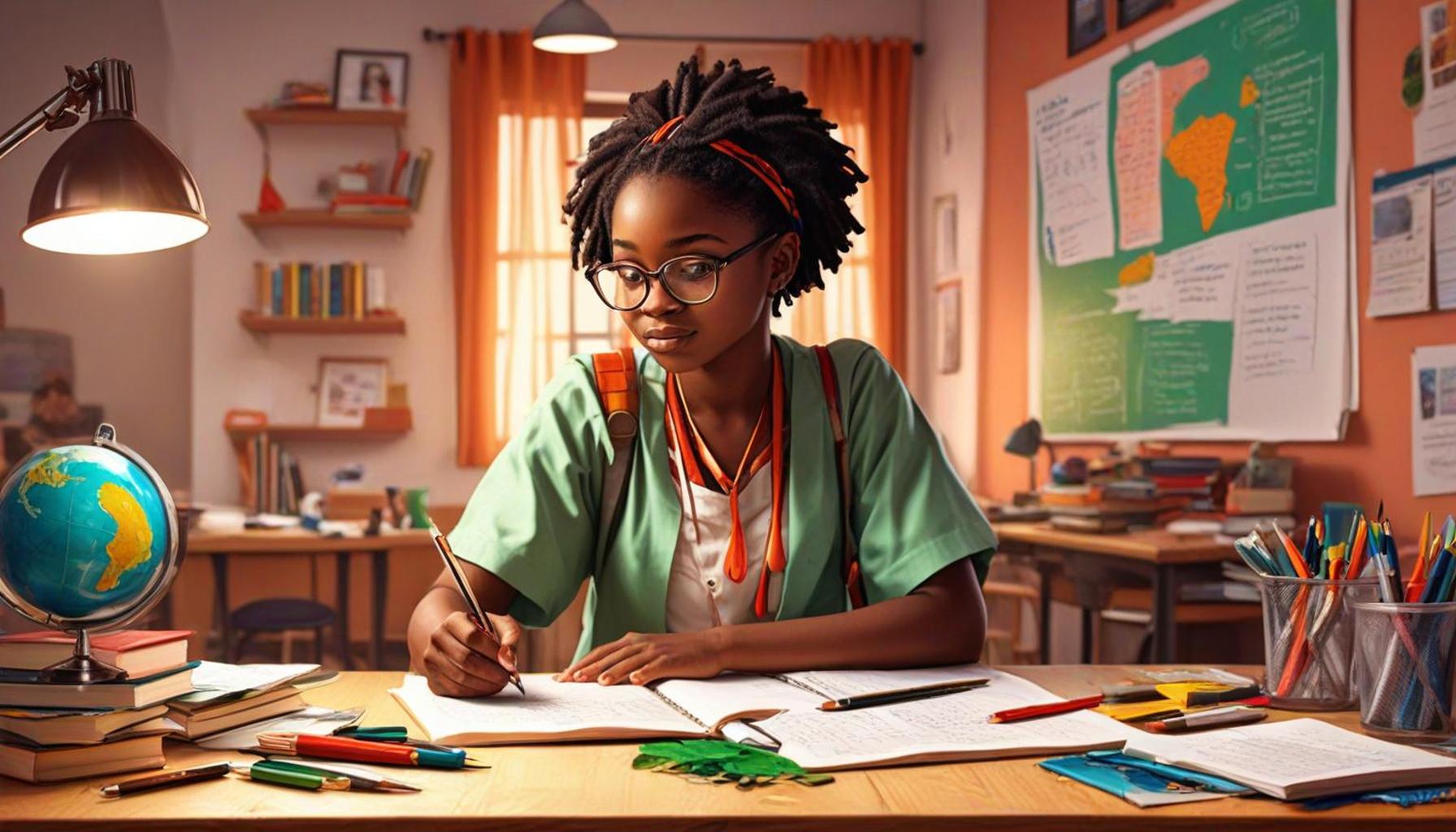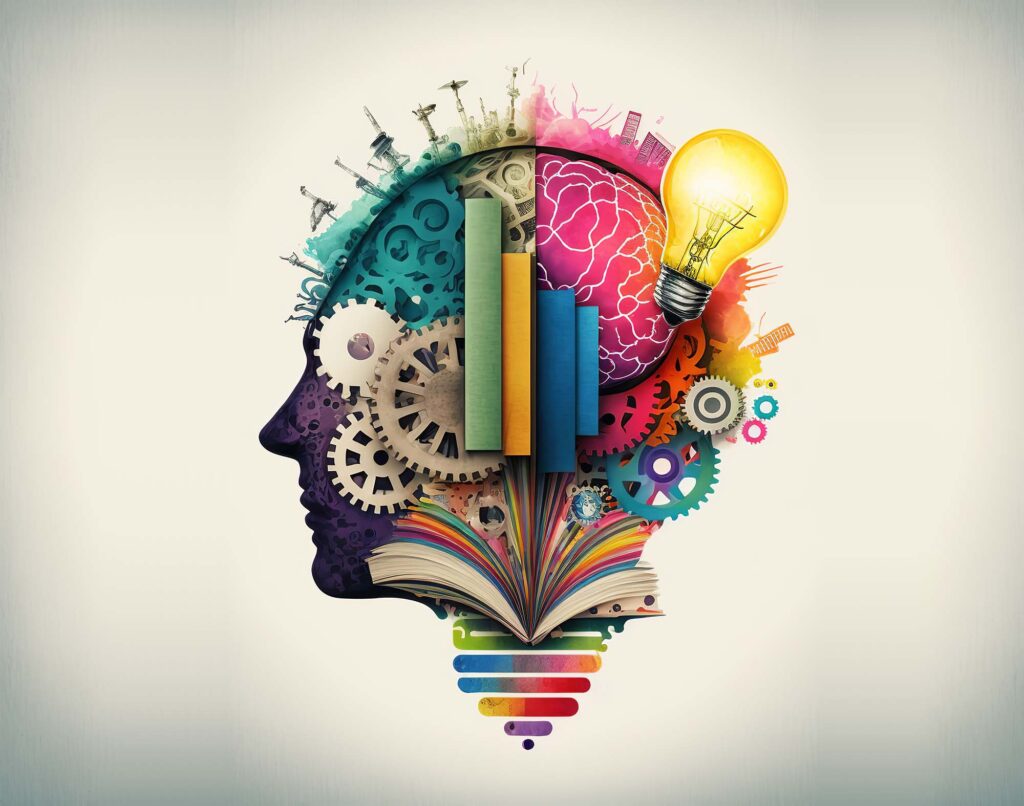How to Set Learning Goals to Foster Creativity in Nigerian Students

The Role of Creativity in Education
In today’s fast-paced world, creativity has become essential in virtually all fields, especially in education. In Nigeria, the need for innovative thinkers is becoming increasingly urgent as the country faces various social and economic challenges. By integrating creativity into the educational framework, we can prepare students not only to respond to these challenges but also to drive change. Setting structured learning goals is a pivotal way to achieve this goal.
Importance of Setting Clear Goals
When educators implement SMART (Specific, Measurable, Achievable, Relevant, Time-bound) goals, they provide a roadmap for students. For instance, a teacher might set a goal for students to create a renewable energy project within two months, making it specific and time-bound. This encourages students to apply knowledge from environmental science, mathematics, and technology, fostering multifaceted learning and creative problem-solving.
Embracing Diversity in Learning
Another important aspect of enhancing creativity lies in diversity. By exposing students to various learning modalities—such as visual arts, music, science experiments, and interactive technology—educators can address different learning styles. For example, integrating local culture into art classes not only instills pride but also encourages students to express their identities creatively. When students create art inspired by their communities or historical figures, they learn to appreciate their roots while developing critical thinking skills.
The Power of Collaboration
Collaboration is imperative in nurturing creativity. When students work together on projects or engage in group debates, they are exposed to multiple perspectives, which can spark innovative ideas. For instance, a group project focusing on agricultural challenges can bring together students from different disciplines—science students might address crop diseases, while business students might focus on market strategies. This collaborative approach helps students recognize the interconnectedness of various fields and encourages them to devise comprehensive solutions.
Long-lasting Benefits of Creative Education
As students in Nigeria embrace innovative thinking, cultivate problem-solving skills, and enhance self-expression, they become well-equipped to tackle local and international challenges. The ability to think creatively enhances their employability and can inspire entrepreneurial endeavors. For instance, young innovators could develop apps aimed at improving healthcare delivery or devising sustainable farming techniques tailored to Nigeria’s unique environment.

Fostering creativity through educational practices matters immensely for Nigeria’s future. As educators and parents understand the significance of structured learning goals, they pave the way for a generation capable of innovative thinking and impactful contributions on a global scale. The journey towards an enriched educational landscape is promising, emphasizing that creativity is not just a skill for artists but a necessary trait for all learners in today’s world.
LEARN MORE: This related article may interest you
Crafting Effective Learning Goals
Setting effective learning goals is not merely a formality in the educational process; it is an essential strategy that can act as a catalyst for creativity in Nigerian students. To truly foster creativity, educators must prioritize well-defined goals that resonate with students’ lives and aspirations. Personalization is key—learning objectives should reflect individual students’ interests and cultural backgrounds, thereby making education more engaging and relevant.
Identifying Key Areas for Creativity
When establishing learning goals, educators should consider various domains that can stimulate creative thinking. These areas include:
- Artistic Expression: Goals can be set around visual arts, music, drama, or dance, encouraging students to explore their creative potential across diverse art forms.
- Critical Thinking and Problem Solving: Objectives such as engaging in community-based projects that require innovative solutions can enhance students’ ability to think critically about real-world challenges.
- Interdisciplinary Learning: Setting goals that blend subjects such as science and technology with humanities can encourage students to think outside the box and approach problems from multiple angles.
- Cultural Exploration: Goals that promote an understanding of local heritage can inspire students to use their cultural backgrounds as springboards for creative expression.
By focusing on these key areas, teachers can create a curriculum that not only imparts knowledge but also nurtures the innate creativity within each student. For instance, a goal might involve students collaborating with local artisans to develop a project that showcases traditional crafts while incorporating modern techniques. This amalgamation of old and new fosters innovation and cultural appreciation.
Utilizing Assessment as a Tool for Growth
Another critical aspect of setting effective learning goals is incorporating assessment methods that encourage creativity rather than hindering it. Traditional grading systems often emphasize rote memorization over creative expression, but alternative assessment strategies can provide a more comprehensive picture of student learning. Consider utilizing:
- Project-Based Assessments: These encourage students to demonstrate their creative process and product. For example, students tasked with creating a sustainable urban garden can showcase planning, research, and hands-on skills.
- Peer Reviews: Engaging students in evaluating each other’s work promotes a collaborative spirit, allowing them to learn from diverse perspectives and cultivating a culture of constructive feedback.
- Self-Assessment: By guiding students to reflect on their learning journey, educators empower them to take ownership of their creative development and identify areas for growth.
By taking these steps, educators in Nigeria can set learning goals that truly foster creativity, ensuring that students are not just consumers of knowledge but are active participants in their educational journey. This transformation is vital in equipping the next generation with the skills needed to navigate an increasingly complex world.
| Category | Description |
|---|---|
| Goal Clarity | Establishing clear, measurable learning goals that guide students in creative thinking processes. |
| Personalized Objectives | Tailoring learning objectives to individual student interests to ignite passion and foster a unique creative expression. |
Setting learning goals is crucial for nurturing creativity among Nigerian students. The first category, Goal Clarity, emphasizes the importance of having well-defined objectives that enable students to channel their creative efforts effectively. By outlining specific criteria for success, educators can guide students through the process of tackling problems in innovative ways. This systematic approach fosters an environment where creativity can thrive.In addition, establishing Personalized Objectives allows educators to connect with students on a deeper level. By understanding each student’s unique interests and strengths, teachers can formulate tailored goals that resonate with their aspirations. Customized learning paths encourage students to engage more deeply with their education, leading to greater creative output. Exploring these strategies can significantly impact the educational landscape for Nigerian students, leading to a generation of innovative thinkers ready to tackle challenges.
SEE ALSO: Click here to read another article
Incorporating Collaboration and Community Engagement
To craft learning goals that truly foster creativity, it’s essential to incorporate collaboration and community engagement into the educational framework. Nigerian students thrive in social environments where they can share ideas, brainstorm solutions, and build on each other’s strengths. Collaborative goal-setting activities not only encourage creativity but also develop critical social skills necessary for future success in the workplace and society.
Team Projects and Group Learning
Group projects can be designed to challenge students to work together towards a common goal, thus sharpening their creative capabilities. For instance, educators might structure a learning goal around a community health initiative where students are tasked with developing a campaign to raise awareness about hygiene in local schools. The process will require them to brainstorm innovative methods to communicate their message effectively, such as using visuals, drama, or music relevant to their community’s culture. Such projects allow students to express their creativity while also fostering skills like teamwork, communication, and problem-solving.
Partnering with Local Organizations
Another way to inspire creativity is through partnerships with local organizations, artists, and entrepreneurs. Setting learning goals that involve real-world application—like collaborating with local craftsmen to create a product that integrates traditional techniques with modern design—can have a profound impact. For instance, students could be tasked with developing unique fashion pieces that reflect Nigeria’s diverse cultural heritage, thereby motivating them to research locally-sourced materials and creative design processes.
Such initiatives can not only broaden students’ perspectives but also make education more relevant to their lives, sparking a deep curiosity about their cultural assets and their innovative possibilities. Moreover, when students see their ideas brought to life within the community, it boosts their sense of ownership and pride in both their work and their heritage.
Encouraging Reflection and Iteration
To further foster creativity, educators should integrate a reflection and iteration process into their learning goals. Rather than viewing a completed project as the end point, students should be encouraged to reflect on their work, assess what was effective, and identify areas for improvement. Teacher-led discussions—perhaps through creative journals or blog-style entries—can prompt students to articulate their creative processes and thought patterns.
This practice empowers students to view mistakes as a vital component of the creative process, rather than setbacks. For example, a student creating a digital art piece might have to revise their work multiple times based on peer feedback and personal reflection. When they learn that iteration is part of creativity, they are more likely to explore unconventional approaches and solutions in future projects.
Ultimately, by cultivating an environment that emphasizes collaboration, community engagement, and reflection, educators in Nigeria can set learning goals that not only nurture creativity but also prepare students to become innovative thinkers ready to tackle the complexities of today’s world.
YOU MAY ALSO LIKE: Read read another article
Conclusion
In the ever-evolving landscape of education, setting learning goals that prioritize creativity is essential for Nigerian students. To achieve this, educators must embrace a multifaceted approach that includes collaboration, community engagement, and a focus on reflection. By fostering a learning environment that encourages teamwork through group projects and partnerships with local organizations, students are not only inspired to think creatively but are also equipped with essential social skills that prepare them for future challenges.
Moreover, integrating reflection and iteration into the learning process allows students to view their creative journeys as dynamic and ongoing. This perspective shifts the focus from merely completing tasks to engaging with the potential for improvement and innovation. Encouraging students to explore their unique cultural heritage while collaborating with local artisans and organizations further enhances their creativity and sense of belonging.
As educators in Nigeria navigate the complexities of teaching, it becomes crucial to remember that creativity is a muscle that requires regular exercise. By thoughtfully setting learning goals that stimulate imaginative thought and practical application, we can cultivate a generation of students who are not only creative thinkers but also proactive problem solvers. Ultimately, this transformative approach to education holds the promise of unlocking the immense potential nestled within Nigeria’s diverse student population, enabling them to contribute meaningfully to society.
Related posts:
The Importance of Aligning Personal and Community Goals for Sustainable Development
Goals and Empowerment: How Setting Personal Objectives Can Transform Lives in Nigerian Communities
The Relationship Between Goals and Self-Discipline: Building Habits for a Sustainable Growth Mindset
The Role of Goals in Overcoming the Fear of Failure and Promoting a Growth Mindset
The Role of Goals in Building Resilience in Nigerian Entrepreneurs
The Importance of Goal Setting in Building a Growth Mindset

Linda Carter is a writer and self-discipline expert specializing in personal growth, habit building, and goal achievement. With extensive experience helping individuals develop focus, consistency, and resilience, Linda shares her knowledge on our platform. Her goal is to empower readers with practical advice and strategies to cultivate self-discipline, make intentional choices, and achieve success in both their personal and professional lives.